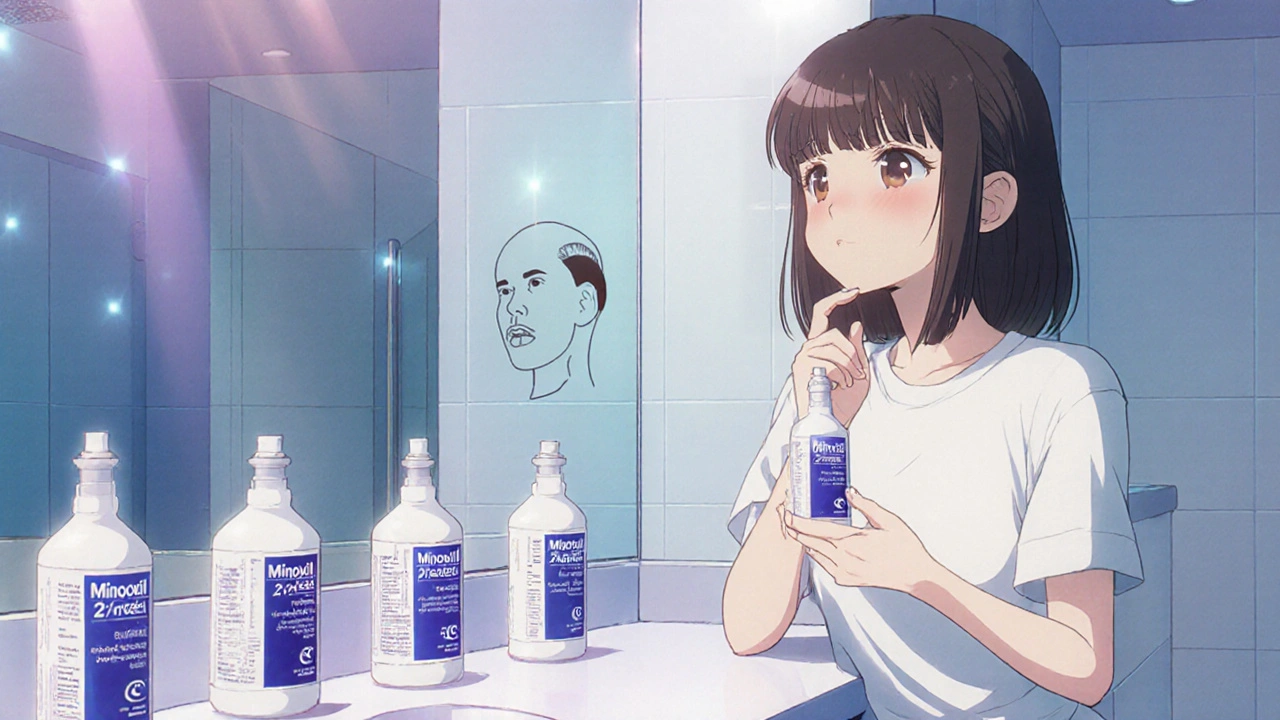Minoxidil Strength: What Works, What Doesn't, and How to Choose
When it comes to minoxidil, a topical medication approved by health authorities for treating male pattern baldness. Also known as Rogaine, it's one of the few over-the-counter treatments with real, proven results for hair regrowth. But not all minoxidil is created equal. The strength you pick—2%, 5%, or even 10%—can make a huge difference in how fast you see results, how many side effects you get, and whether it even works for you at all.
Most men start with 5% minoxidil, the most common strength recommended for men with moderate to severe hair thinning. It’s the sweet spot: strong enough to slow hair loss and encourage new growth, but mild enough that most people can use it daily without serious irritation. Studies show about 60-70% of men using 5% minoxidil see noticeable improvement after 4-6 months. If you’re just starting out and your hairline is thinning but not completely gone, this is where you begin.
Then there’s 2% minoxidil, a lower-dose option often marketed for women, but sometimes used by men with sensitive skin or mild thinning. It’s less likely to cause scalp itching or flaking, but it’s also less effective for significant hair loss. If you’ve tried 5% and got a bad reaction, dropping to 2% might help you stick with treatment. But if your goal is real regrowth—not just stopping more loss—2% won’t cut it.
Some people jump straight to 10% minoxidil, a higher concentration not officially approved in the U.S. but available through compounding pharmacies and online. It sounds like a better option—more strength, more results, right? Not necessarily. There’s no solid evidence that 10% works better than 5% for most men. What it does do is increase the risk of side effects: scalp redness, dryness, unwanted facial hair, and even heart palpitations in rare cases. If you’re thinking about 10%, talk to a doctor first. It’s not a magic bullet.
What you apply matters just as much as how much you apply. Minoxidil only works where you put it. If you’re missing spots or not using it consistently, you won’t see results. And it takes time—most people don’t notice changes until after 3-4 months. If you quit too early, you’ll think it didn’t work. But if you stick with it, and use the right strength, your scalp can start responding.
Also, minoxidil doesn’t fix everything. If your hair loss is tied to low testosterone, thyroid issues, or stress, treating the root cause matters just as much as slapping on a solution. That’s why some of the posts below look at how opioids affect testosterone, how stress impacts heart health, and how supplements like methylfolate can support overall wellness. Minoxidil helps with the symptom—hair thinning—but your body’s bigger picture matters too.
Below, you’ll find real-world comparisons and guides from men who’ve tried different strengths, dealt with side effects, and figured out what actually works. Whether you’re just starting out or you’ve been using minoxidil for years, there’s something here to help you make smarter choices—no hype, no fluff, just what works.
How to Pick the Right Minoxidil Strength for Your Hair Loss
Learn how to pick the right minoxidil concentration for your hair loss. This guide covers 2% vs 5% options, safety tips, patch testing, and when to see a dermatologist.
© 2025. All rights reserved.

